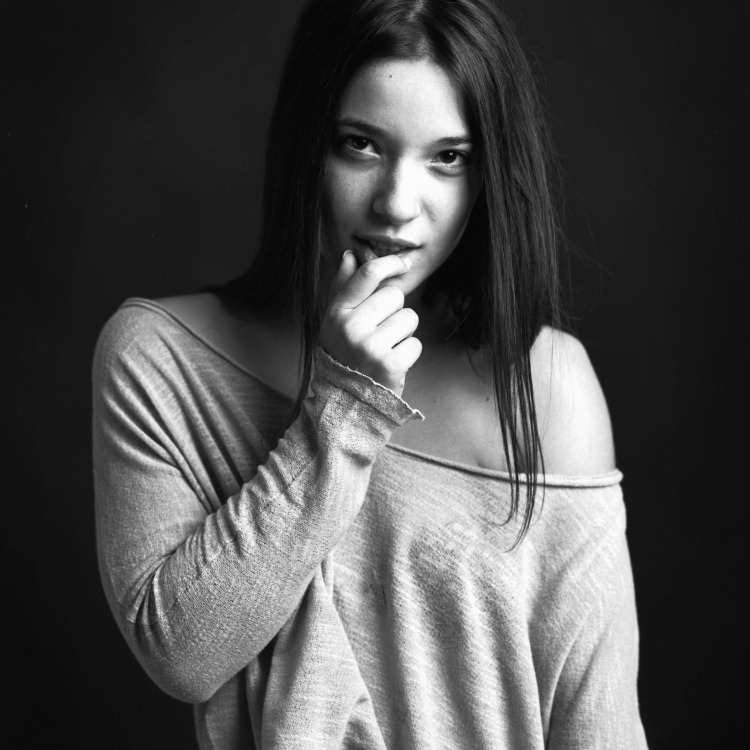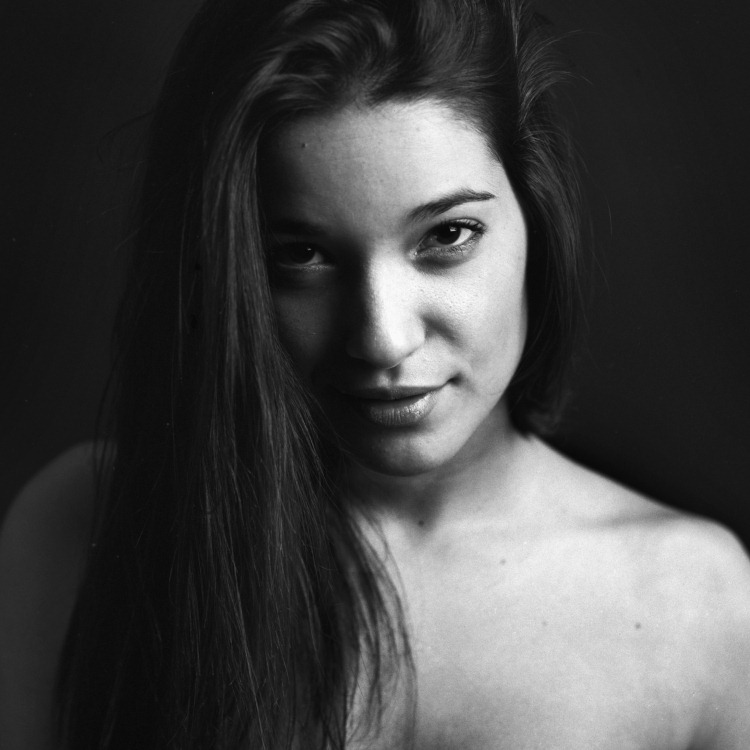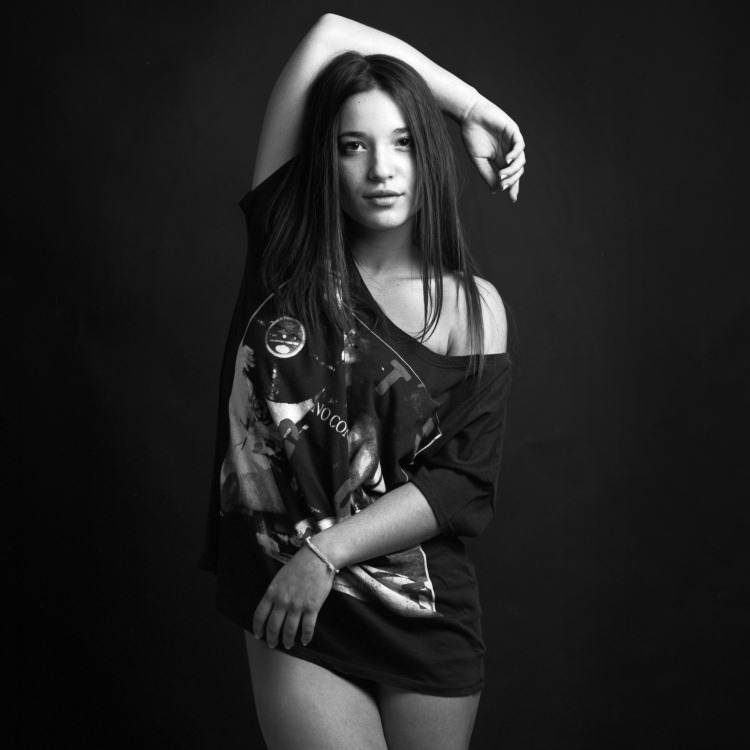natasa
this week's portrait entry is an indoors session. I had shot natasa back in may, and we both wanted to do another, more relaxed, session. I called her over to my place, and we spent a couple of hours trying to get the best out of a confined home studio and my film cameras. I really need to find a space for a proper studio, a 80x80cm softbox is very difficult to maneuver around living room furniture, or in the 10sqm space which modern greek house-builders tend to believe is the ideal size for a bedroom.
we started off with the omega view 45d and the schneider xenar 150mm/f5.6. I had a couple of 4x5 film holders loaded with fomapan 400, as well as a polaroid holder loaded with fuji fp-100b black & white instant film. the resulting fomapan 400 image was a bit underexposed, but I find it an interesting approach, just like the rice paper portraits on Paolo Pellegrin's "Storm"
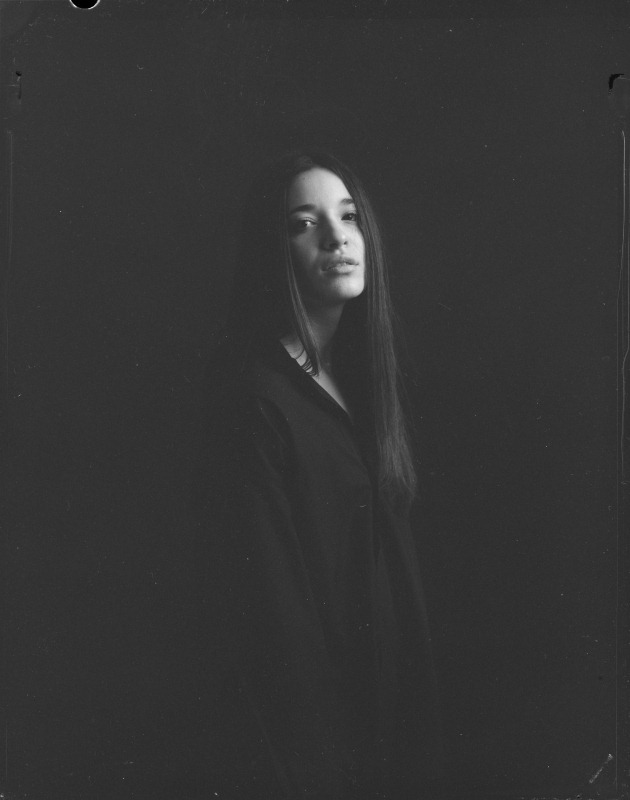
then I switched to the instant film holder, and the resulting polaroids are a testament to the magnificence of instant film. no feeling can be compared with the tingle you get when you peel apart the "sandwiched" film and you have a positive print with exemplary black & white tones in your hands. there were four remaining frames on the film holder, I shot all of them, correcting the framing issues (I never understood why the polaroid holder's alignment is not centered).
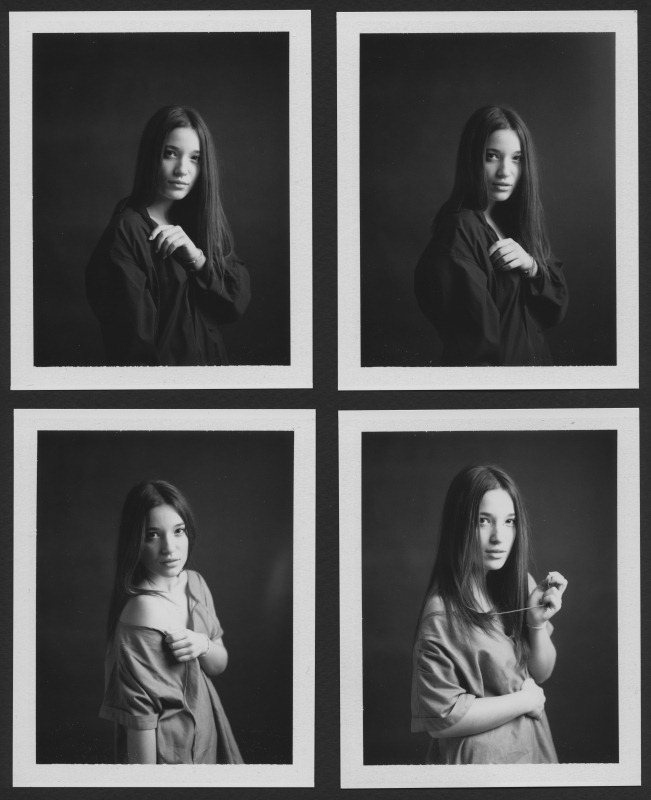
...and then, of course, there's the negatives... the fuji fp-100b b&w negatives tend to solarize after development, so I stored them in a dark cupboard as soon as I had peeled them off the positive prints. I have no idea if I did the right thing, but I do know what came out of it after I bleached them... the resulting negative had a very strong orange base, exhibited solarisation in the highlights (on the face), and it was impossible to properly scan as a black and white negative. I scanned it as color negative, which could be a totally acceptable approach...

...and then I inverted it, applied a red-filtered black & white conversion in order to compensate for the orange base, and the original black & white image popped up. I still need to refine my bleaching & cleaning technique on the fuji fp-100b negatives, there's a lot of development goo still stuck on this negative.
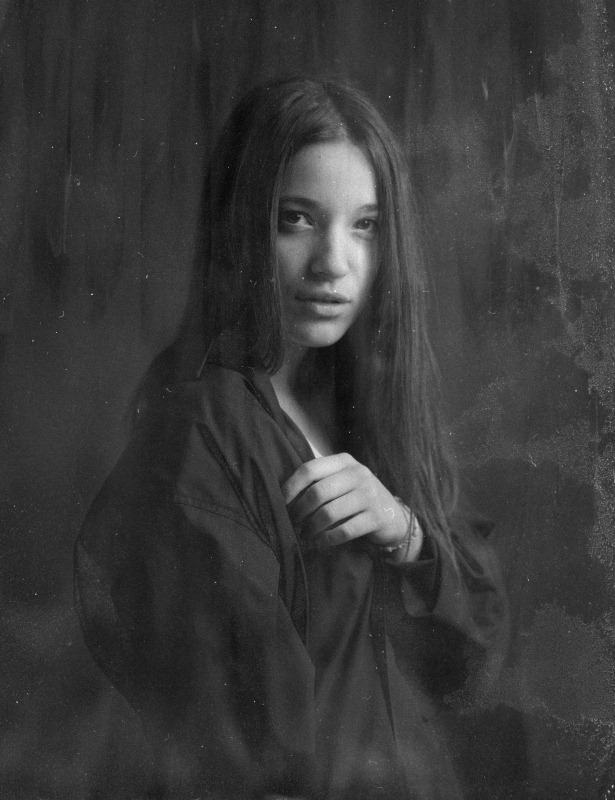
then we moved on to the bronica sq-a, which I loaded with fomapan 100 film. while this film performs well, I'll have to stop using it because it does not agree well with my current developer (diafine) and it isn't that cheap... all things considered, I'd rather pay 4-5€ for a kodak/ilford/fuji film than 3-3.5€ for any other alternative. this axiom is true only for the medium format range - for large format, the fomapan films are very good and their pricing makes them a real bargain.
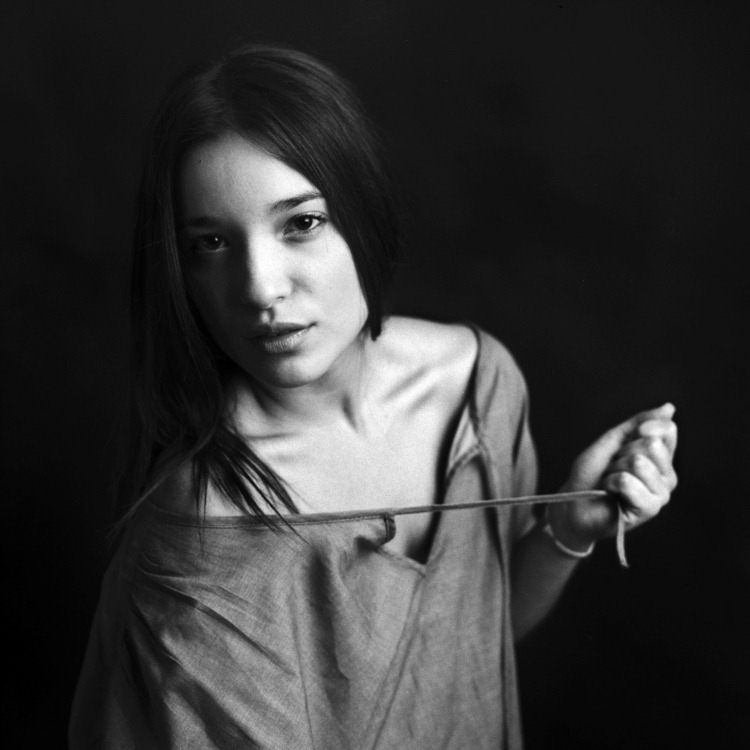
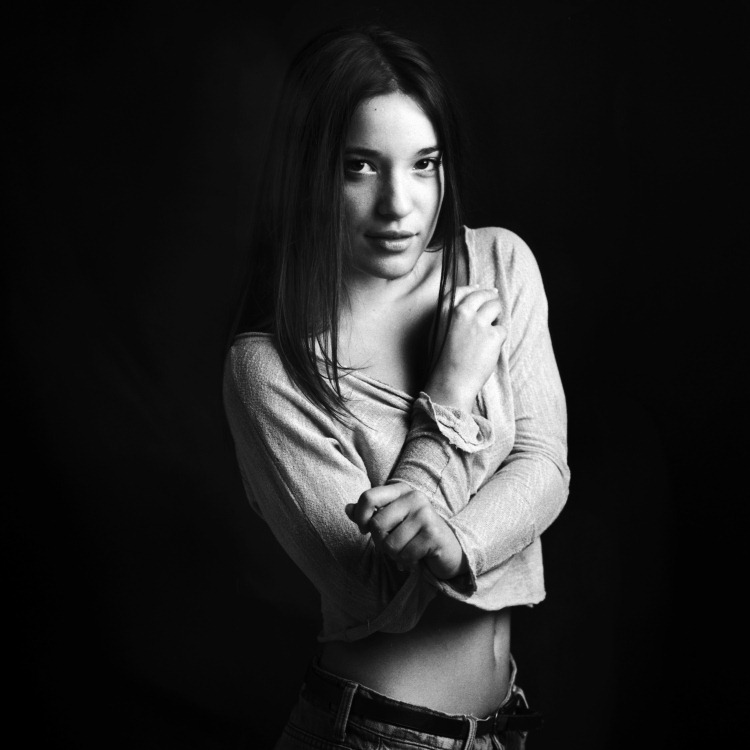
back on large format, toying with the best film batch I ever laid my hands on: a box of kodak royal pan, 400 ASA, that expired in 1973. 40 years later, its speed has been reduced to 25 ASA and it exhibits high fog, low contrast, lots of grain, low sharpness, mediocre resolving power, lots of artifacts - the perfect film for lo-fi large format images.
the first shot is in the studio with the xenar 150mm/f5.6, while the second shot is lit with continuous lighting. I changed the lens on the view camera, and put on the leitz hektor 150mm/f2.5, minimizing the depth of field and also gaining two stops of speed. the bedroom shot required 4 seconds of exposure. I achieved this exposure using the first shutter mechanism that was ever invented: cover the lens with its cap, remove the darkslide, issue a command of non-movement to the model, remove the lens cap, count slowly to 4, replace lens cap.

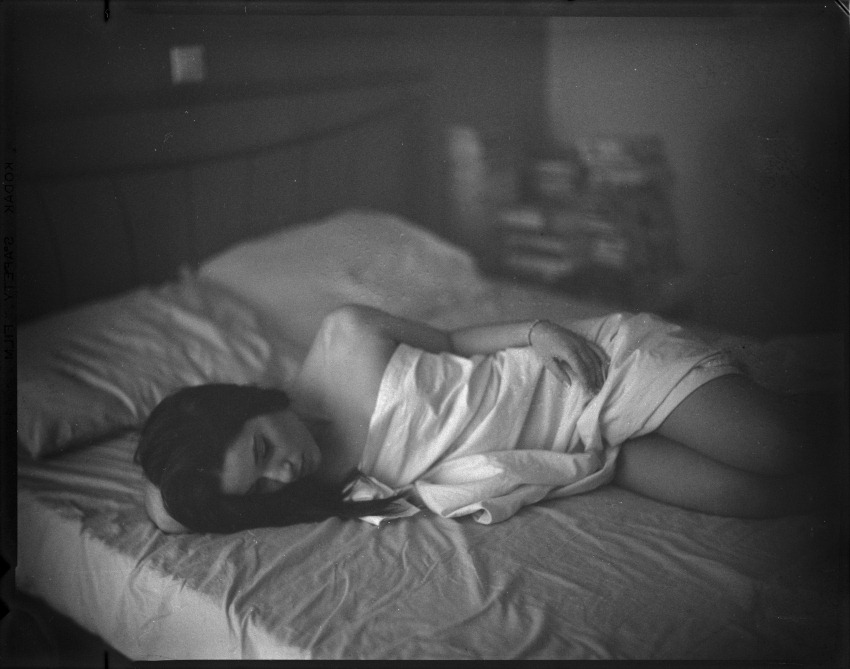
...I was out of large format film, so it was time for the bronica again. I took the view camera off the tripod and fixed the bronica - this shot only required 1 sec of exposure, which is very easy to do when you have a camera with a proper shutter: just set the shutter to "1sec", raise the mirror, use a cable release to activate the shutter. oh, the joy of modern cameras.
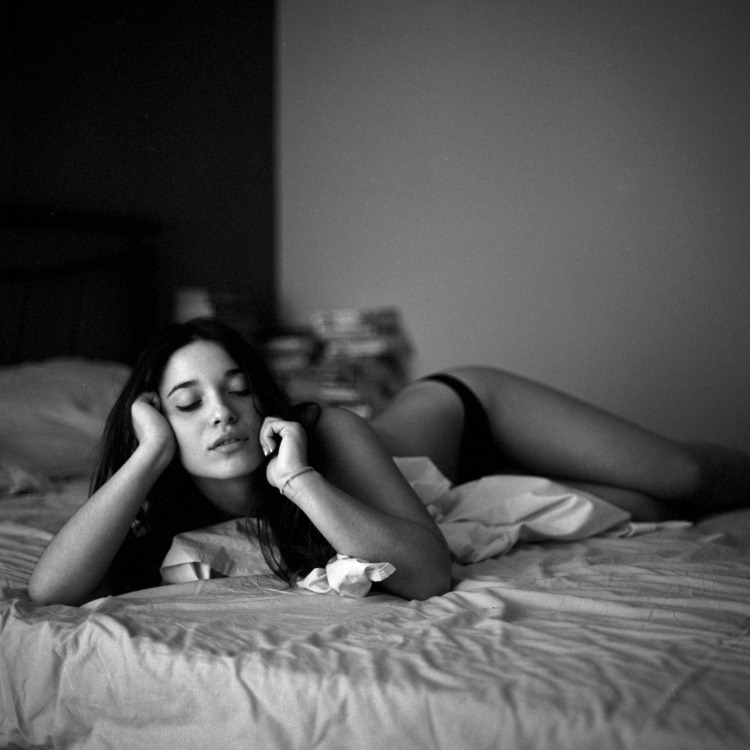
...and back to the studio again, because you can never go wrong with shooting a second roll of film on the same subject.
